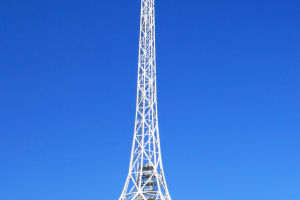Photographing the Milky Way is a captivating experience that allows us to glimpse the breathtaking beauty and intricate complexity of the universe.
While the mysteries of the cosmos elude complete comprehension, the art of galactic photography enables us to appreciate the celestial wonders above.
The true essence of a remarkable image lies in the skill and vision of the photographer who employs creativity, meticulous planning, and ingenuity to bring the scene to life.
Presented here are the victors of the 6th Annual Galaxy Photographer of the Year 2023 competition, showcasing the finest galaxy photos captured around the world. Our visual journey spans the remote deserts of Socotra, Madagascar, Atacama, and Namibia, traversing the enchanting landscapes of Patagonia, Australia, and New Zealand.
Along the way, we encounter spectacular glaciers, volcanoes, mountains, and beaches, providing a tapestry of cosmic marvels.
Each photograph offers a glimpse into the mesmerizing tapestry of the Milky Way, revealing the profound beauty of the celestial expanse above.
On a clear night, gazing upward reveals a silvery-white band of light, comprised of numerous stars, cutting across the sky from northeast to southwest—the Milky Way. The Silver Heart, the brightest and most illuminating part, takes center stage, captivating observers.
However, it's important to note that the Milky Way is not a standalone entity but rather a fragment of the grand cosmic panorama.
Ideal conditions for Milky Way photography involve cloudless or minimally cloudy skies. Cloud cover poses challenges to capturing the Milky Way, and extensive cloudiness renders it impossible to photograph.
Additionally, the moon's presence can dilute the Milky Way's effect, particularly during full or half-moon phases. The best results occur when the moon is at a new moon phase, exerting minimal influence on the scene.
Urban environments, with their severe light pollution, present challenges to Milky Way photography. To maximize the impact of the Milky Way, it is advisable to capture it far away from the interference of artificial light.
Achieving optimal exposure for Milky Way photography involves adhering to principles of a large aperture, high sensitivity, and long exposure time.
A general exposure time of around 30 seconds minimizes star trailing, while a wide aperture, such as F2.8, allows more light through the lens. Sensitivity settings like ISO1600, ISO2000, or ISO3200 enhance the visibility of the Milky Way in the photograph.
Given the faintness of light in the night sky, autofocus becomes impractical. Manual focusing to infinity is essential, especially with wide-angle or ultra-wide-angle lenses.
Precise focus can be achieved by manually adjusting the focus ring to infinity and then slightly backing off by 1-3mm, depending on the lens.
Before embarking on a Milky Way photography session, understanding the infinity position of the lens is crucial. Experimenting with daytime shots enables quick and accurate focusing when capturing the celestial spectacle at night.
Embarking on a celestial odyssey, these captivating images transport viewers from the desolate landscapes of Socotra to the ethereal beauty of Patagonia. Beyond the lens, the photographer's mastery of exposure parameters—large apertures, heightened sensitivity, and extended exposure times—illuminates the cosmic wonders above.


